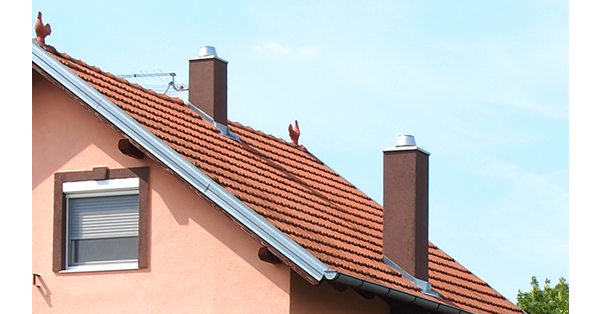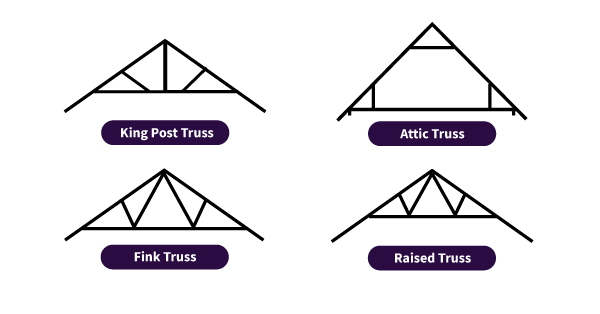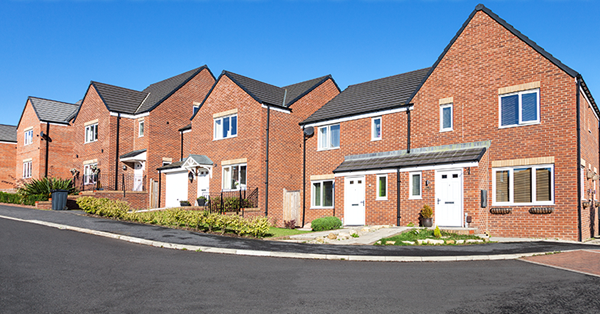Should I Buy a House With Timber Roof Struts?
- Buying a house with timber roof struts or purlins can be risky depending on how you assess the roof's condition.
- Top tip: Once you get an inspection report from your roof surveyor, use the information to your advantage in negotiations with the seller.
- If you’re buying a new-build property, the most likely roof truss used would be the fink truss. Ensure you get a snagging survey done to properly assess the roof’s condition after it is built.
Understanding the structural components of a property you’re about to buy is crucial. One of these components is the roof structure, which often includes roof struts or trussed rafters.
In this article, we will explore what roof struts are, the different types of roof trusses, and how to negotiate a new roof when purchasing a home in the UK.
What are roof struts?
Roof struts, commonly known as roof trusses, are made from timber, steel, or other materials that support the structural framework of the roof of a building. They are designed to provide stability and distribute the weight of the roof evenly across the walls of the building or house.
In residential properties, engineered timber is the most used material for roof trusses due to its cost-effectiveness, strength, and ease of installation.
Do you need a house survey?
Our Level 2 and Level 3 home surveys include a visual inspection of accessible buildings, roofs and attics. We'll help you choose the most cost-effective survey for your property.
Roof struts and trussed rafters play a vital role in maintaining the integrity of the roof. They support the roof and ensure the roof remains level and secure, preventing sagging and potential collapse. The quality and condition of these struts are essential concerns when evaluating the overall health of a property's roof. If you have a flat roof, it would not have been constructed with struts, but with horizontal joints like you'd find under floorboards.

Advantages of timber struts
Cost-effectiveness – timber is generally more affordable than other materials such as steel or concrete. This makes timber struts a cost-effective option for both initial construction and future repairs.
Ease of installation – timber is relatively easy to work with, allowing for quicker and more flexible construction. This can reduce labour costs and shorten construction timelines.
Insulation – timber naturally provides better thermal insulation compared to metal or concrete. This can contribute to improved energy efficiency and reduced heating costs in a home.
Sustainability – when sourced from responsibly managed forests, timber is a renewable resource. Using timber for roof struts can be an environmentally friendly choice, especially if the wood is certified by organisations like the Forest Stewardship Council (FSC).
Aesthetic appeal – an exposed timber roof strut can add a charming and rustic visual to a home. This is particularly appealing in traditional and country-style properties.
In our recent survey, 16% of homeowners found defects; including 2% who were able to pull out of a bad purchase, 7% who were able to negotiate a better price, and sadly, 7% of homeowners who did not get a survey and discovered defects after the purchase.
12 of the 39 who remembered how much these defects cost to remedy spent over £5,000
Don't burn your money, book a survey.

Disadvantages of timber struts
Susceptibility to moisture – timber can be vulnerable to moisture, which can lead to rot, decay, and mould growth. Proper treatment and maintenance are essential to protect the timber struts from water damage.
Insect infestation – timber is prone to attacks from insects such as termites and wood-boring beetles. Regular inspections and treatments are necessary to prevent and address infestations.
Fire risk – timber is a combustible material, which can pose a higher fire risk compared to non-combustible materials like steel. Some treatments can mitigate this risk, but it's still a factor to consider for homeowners.
Maintenance requirements – timber ceilings and roof struts require regular maintenance to ensure longevity. This includes treatments for moisture resistance, pest control, and periodic inspections to detect and repair any damage.
Strength and durability – while timber is strong, it may not be as durable as steel or concrete, especially under extreme weather conditions or heavy loads. Structural engineers often need to ensure that the design and quality of engineered timber can meet the specific demands of the building.

Types of roof trusses
Understanding the different types of roof trusses, also known as trussed rafters, can help you make an informed decision when buying a house. Here are some common types of timber roof trusses used in UK homes:
King Post Truss
The king post truss is the simplest and most cost-effective type of roof truss. It consists of a central vertical post (the king post) and two diagonal struts that connect to the base of the standard roof truss. This type is suitable for smaller spans and is commonly found in older properties.
Queen Post Truss
The queen post truss is like the king post truss but includes two vertical posts (queen posts) instead of one. This design allows for a wider span and is often used in larger homes and extensions.
Fink Truss
The fink truss is the most common type of roof truss used in modern residential construction. It features a W-shaped design that provides excellent strength and stability. Standard fink trusses are ideal for medium to large spans and are often used in new builds.
Attic Truss
The attic truss is designed to create additional living space within the roof structure. It includes a larger, open area in the middle of the truss, making it perfect for converting the attic into a usable room. Attic trusses on roofs are increasingly popular in the UK as homeowners look to maximise their living space.
Raised Tie Truss
Raised tie trusses are used when a higher ceiling is required within a room. The bottom chord of the truss is raised, allowing for a vaulted ceiling effect. This type of truss is commonly found in properties with modern architectural designs.
There are other types of roof trusses like scissor trusses (typically used to support a pitched roof), and mono trusses (sloped in one direction for multiple roof lines).

How to negotiate a new roof when buying a home
It’s essential to assess the condition of the roof trusses or trussed rafters of your potential new home and negotiate accordingly. Here are some steps to help you navigate this process:
Get a professional roof inspection
Hire a qualified surveyor or roofing specialist to conduct a thorough inspection of the roof. They will assess the roof fabric and the condition of the timber struts, identify any signs of damage or wear, and provide an estimated lifespan for the roof.
Review the inspection report
Carefully review the inspection report to understand the current state of the roof. Look for any signs of structural issues, such as rot, insect infestation, or water damage. Pay attention to any recommendations for repairs or replacements.
Estimate repair or replacement costs
Find quotes from reliable roofing contractors for any repairs or replacements. This will give you a clear idea of the potential costs involved. Use these estimates during negotiations with the seller.
Negotiate with the seller
Prepare yourself with the inspection report and repair estimates, then negotiate with the seller to address any roofing issues. You can request that the seller either complete the necessary repairs before the sale or adjust the asking price to account for the repair costs.

Consider the long-term investment
While negotiating, consider the long-term benefits of a new or repaired roof. A well-maintained roof adds value to the property and can save you from costly repairs in the future. Factor this into your decision-making process.
Buying a house with timber roof struts requires careful consideration and due diligence. By understanding the different types of roof trusses and following a structured negotiation process, you can make an informed decision and secure a property with a sound roof. Always consult with professionals and conduct thorough inspections to ensure that your investment is protected and that you are fully aware of the condition of the property's roof.
Jack is our resident Content Writer with a wealth of experience in Marketing, Content, and Film. If you need anything written or proof-read at a rapid speed and high quality, he's your guy.
Caragh is an excellent writer and copy editor of books, news articles and editorials. She has written extensively for SAM for a variety of conveyancing, survey, property law and mortgage-related articles.









